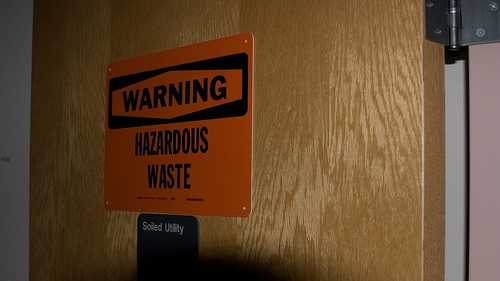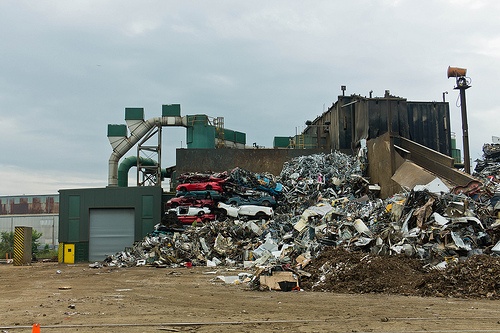On December 7, the US Environmental Protection Agency (EPA) revised the Hazard Ranking System (HRS) it uses to compare site contamination and to designate the most hazardous sites for the National Priority List (NPL) for cleanup. This revision adds “subsurface intrusion” – i.e., intrusion of hazardous liquids such as contaminated groundwater and/or vapors from subsurface chemical contamination into structures – to the potential pathways to public harm evaluated by HRS when evaluating contaminated sites. This represents the first additional pathway added in nearly three decades. The revisions will become effective 60 days after publication in the Federal Register, presumably during the first quarter of 2017.
Read MoreAudit, Compliance and Risk Blog
Jon Elliott
Recent Posts
EPA Adds Subsurface Intrusion to the Superfund Hazard Ranking System
Posted by Jon Elliott on Tue, Jan 10, 2017
Tags: Environmental risks, Environmental, EPA, Hazcom
As you consider which gifts to give this Holiday season, the U.S. Supreme Court has just made it clear that you should not give the gift of insider stock tips. The Salman v. United States decision resolves a split between lower courts about whether the government must show that someone who breaks trust by giving insider information to a friend or relative automatically breaks rules against insider trading since the “tipper” expects the “tippee” will make money from the tipped information, or whether prosecutors must be prove the tipper expects to gain personally when the tippee trades.
Read MoreTags: SEC
EPA Proposes First Major Reviews of Existing Chemicals Under the 2016 Amendments to TSCA
Posted by Jon Elliott on Tue, Dec 13, 2016
The Toxic Substances Control Act (TSCA) was enacted in 1976 to develop adequate data regarding the effects of chemical substances and mixtures on human health and the environment, and to prevent unduly hazardous chemicals from entering commercial use. Over the next 40 years the US Environmental Protection Agency (EPA) focused on addressing new chemical substances, and made minimal progress on updating information about the 62,000 chemicals already in commerce when TSCA was enacted, to discern whether those chemicals posed unacceptable hazards. (I summarized basic provisions here). As the exception proving that rule, EPA conducted a decade-long review of asbestos before determining it should be banned, only to have the decision overturned by a federal court finding that the agency hadn’t incorporated adequate cost-benefit analyses.
Read MoreTags: Environmental risks, Environmental, EPA, Hazcom, tsca
As entrepreneurs commercialize “nanomaterials”, occupational safety and health (OSH) agencies and professionals are developing standards to evaluate and manage the associated hazards. These protective efforts cover the full range of OSH agency efforts. The easiest step is to expand application of the Employer’s General Duty to protect workers against workplace hazards to cover nanomaterials –easiest since this Clause requires employers to take steps against “recognized” hazards, and do not bind the agencies to promulgate specific standards (I’ve written about the General Duty Clause here, and about recommendations for comprehensive safety and health programs here). At the other extreme, the Occupational Safety and Health Administration (OSHA) or other OSH agencies can issue enforceable OSH standards –so far there are none exclusively addressed to nanomaterials, although some materials do trigger some standards (see below). Between these extremes, agencies can and do offer non-mandatory but detailed guidelines for some hazards – the National Institute for Occupational Safety and Health (NIOSH) just issued such a guide for nanomaterials, building on similar publications by other agencies. The rest of this blog discusses the new NIOSH guide, “Building a Safety Program to Protect the Nanotechnology Workforce: A Guide for Small to Medium-Sized Enterprises” (NIOSH Guide), and references some of resources used to produce them.
Read MoreTags: Employer Best Practices, Health & Safety, OSHA, Employee Rights, EPA
The U.S. Environmental Protection Agency (EPA) administers rules governing the import and export of hazardous waste regulated by the Resource Conservation and Recovery Act (RCRA). These rules ensure that the U.S. meets its international responsibilities as a member of the Organization for Economic Cooperation and Development (OECD) by creating national rules that meet agreed-upon OECD standards.
Read MoreTags: Environmental risks, Environmental, EPA, Greenhouse Gas, ghg, Hazcom
On October 18, the Occupational Safety and Health Administration (OSHA) issued “Recommended Practices for Safety and Health Programs” (Recommendations) – which revises its 1989 “Safety and Health Program Management Guidelines” (S&H Guidelines). As the name indicates, these recommendations suggest activities employers should undertake to ensure their employees’ safety and health. They are not regulations or other requirements, but the 1989 Guidelines have long been used by agency inspectors and onsite S&H personnel as generally applicable roadmaps to safer workplaces. This month’s revision end a review process that included a proposal and request for comments published in November 2015 (I blogged about the proposal here).
Read MoreTags: Employer Best Practices, Health & Safety, OSHA, Employee Rights
OSHA Proposes Technical Changes To Dozens Of Requirements
Posted by Jon Elliott on Tue, Nov 08, 2016
The Occupational Safety and Health Administration (OSHA) has proposed to update and/or clarify dozens of provisions in its regulatory standards, within its General Industry, Construction, and Shipbuilding Standards, as the latest round in an ongoing “Standards Improvement Project.” The proposals were published in the October 4 edition of the Federal Register, and comments are due by December 5. Depending on the comments (and perhaps on the outcome of the Presidential election), OSHA plans to finalize changes early in 2017.
Read MoreTags: Employer Best Practices, Health & Safety, OSHA, Employee Rights
As the United States’ Presidential election lurches toward November 8, I wanted to summarize the two major candidates’ positions on environmental issues. Starting with Republican nominee Donald Trump, the first thing to observe is that his official candidate campaign webpage does not list ‘environmental’ as one of the major pull-down issues available for viewing. However, positions on environmental issues are presented in the policy areas that are addressed.
Read MoreTags: Environmental risks, Environmental, EPA
The World Decides To Help The Climate By Helping The Ozone Layer
Posted by Jon Elliott on Tue, Oct 25, 2016
Last month I blogged about basic provisions of the Montreal Protocol on Substances that Deplete the Ozone Layer, and ongoing negotiations to expand it to require phaseout of chemicals that harm the stratospheric ozone layer and contribute to climate change (click here, and included links to early blogs on Montreal Protocol issues). At that time, proposals all focused on hydrofluorocarbons (HFCs). At that point, global HFC use was increasing by roughly 10% annually, driven primarily by expanding use for air conditioning as hot developing countries sought to catch up with comfort levels in their developed counterparts. Proposed timelines and end-targets for reversing that expansion varied considerably.
Read MoreTags: Environmental risks, Environmental, EPA, ghg, climate change
U.S. Commission on Civil Rights Criticizes EPA’s Environmental Justice Efforts
Posted by Jon Elliott on Tue, Oct 18, 2016
In September 2016, the U.S. Commission on Civil Rights (Commission) issued its annual “Statutory Enforcement Report for 2016”; this year’s topic is the Environmental Protection Agency’s (EPA’s) efforts to protect and promote “Environmental Justice.” The Commission reviews decades of EPA efforts, and criticizes longstanding inadequacies.
Read MoreTags: Health & Safety, Environmental risks, Environmental, EPA, ghg, Hazcom, RCRA










